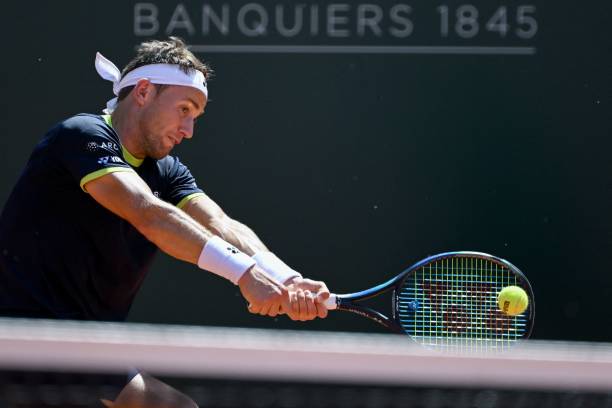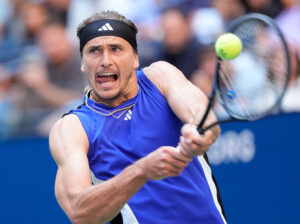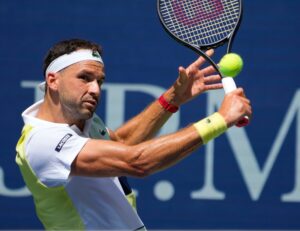ATP Geneva Final: Casper Ruud vs Joao Sousa
Casper Ruud has worked his way into the final, giving himself the chance to repeat here in Geneva. A close but straight-sets win over Reilly Opelka confirms that he is back to his old self on clay, which doesn’t bode well for surprise finalist Joao Sousa. Sousa has made his best push of the season, better even than his tournament win in Pune, which featured very low-level competition. But a top 10 player is a scary endboss in a 250, and a Sousa upset would be a big uphill climb. Having said that, though, while Ruud’s keys to victory might be pretty obvious, what can Sousa do to possibly pull off the major upset?
Similar Game Provides Fewer Opportunities
Ruud is dangerous on clay because he hits through the court so well from both wings. He has powerful and smooth strokes that are augmented by an extended racket, and he deliberates well with the extra beat that the slower surface of clay offers. At the same time, he moves well to manage attacks should an opponent try to preempt his power by pushing him around offensively. He is, in fact, not unlike Nadal—including amount of spin—and presents similar problems on their mutually-favorite surface.
Sousa actually has a similar game, just not to the same level. This adds to the unlikeliness of an upset, because a different game might present problems for Ruud if the opponent could force him to play a style he doesn’t like. But Sousa’s game plays right into Ruud’s, with similar forehand dominance, a similar backhand, movement that is about the same. Options might be open around the net, if Sousa had Alcaraz’s drop shot, or Jannik Sinner’s net savvy, or if he was Novak Djokovic. But Sousa wants to play from the baseline, too.
Open Door on the Second Serve
The second serve usually presents possibilities for attack, if one is not playing Nick Kyrgios. Sousa should jump on it, and not necessarily try to push it away from Ruud, but he might rather try hitting it directly back at him. Ruud moves well, but he does not have the fine footwork or quick reaction time of Djokovic or Federer, and Sousa could find these direct shots returning to him very weakly. Putaways on short balls, or punching through floaters at the net, could put enough pressure on Ruud’s second serve that he faults on his first. His first serve is good, and has a quick motion that makes it hard to read, and seeing fewer of them would be a boon to Sousa.
Learn from Andy Murray
Another surprising tactic that I wouldn’t expect to see Sousa use, but which could possibly provide a backdoor to opportunities, would be Murray-like backhand slices deep to the center of the court. Though Ruud’s forehand is powerful, it likes to absorb and re-direct power rather than create it. Floating balls that drop with little momentum near the baseline are hard for some players to punch through the court, because they really want to use an opponent’s pace against them. Sprinkling this stroke into Sousa’s tactics could create frustration for Ruud, and mis-hits (probably overhitting the forehand) or at least reduced power that Sousa can then do something with. (But don’t tell Ruud—this same tactic would work against Sousa.)
Outside of an inspired effort from Sousa coinciding with an unsuspected drop in skill from Ruud, the Portuguese will need to finagle a crafty strategy into the match to come out victorious. Attacking the second serve back into the body, and not giving Ruud’s forehand the pace it wants, are good places to start. For Ruud, he just needs to play his game. Keep his serve percentage up, batter Sousa from the baseline, and play his usual brand of strong defense. The re-crown is within reach for the Norwegian, but a creative Sousa could pull off one of the upsets of the year.
Main Photo:






